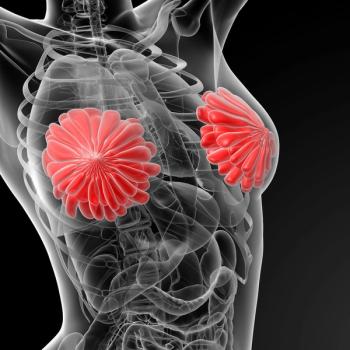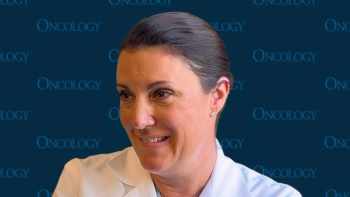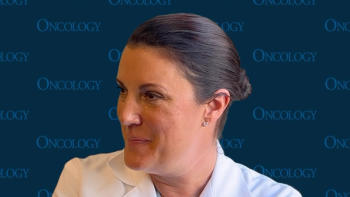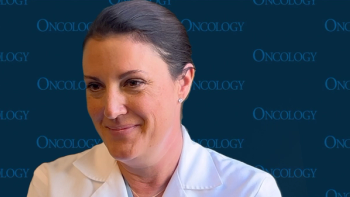
- ONCOLOGY Vol 9 No 2
- Volume 9
- Issue 2
New Noninvasive Test May Improve Breast Cancer Diagnosis and Reduce Unnecessary Biopsies
New clinical research shows that a noninvasive test, the Breast Biophysical Examination (BBE), may help physicians more effectively detect breast cancer, as well as identify women who do not have cancer. The research, funded in part by the National Cancer Institute, was presented at the 17th Annual San Antonio Breast Cancer Symposium.
New clinical research shows that a noninvasive test, the BreastBiophysical Examination (BBE), may help physicians more effectivelydetect breast cancer, as well as identify women who do not havecancer. The research, funded in part by the National Cancer Institute,was presented at the 17th Annual San Antonio Breast Cancer Symposium.
"These studies indicate that the BBE has the potential tohelp physicians more effectively diagnose breast cancer,"says Joseph P. Crowe, Jr., MD, Director of Breast Services atThe Cleveland Clinic Foundation, and the study's lead investigator.
Each year, physical examination and mammography identify suspiciouslesions in millions of women, the vast majority of whom do nothave cancer. Yet many of these women will undergo an extensivediagnostic workup involving multiple tests, such as diagnosticmammography or fine needle aspiration. The next step for manyof these women is surgical biopsy, which can cost up to $4,500per procedure. According to the National Cancer Institute, 182,000new breast cancers will be diagnosed in 1995 from an estimated750,000 surgical biopsies.
"Most of the abnormalities found through screening are benign,"notes Dr. Crowe. "Therefore, an important criterion for anynew diagnostic test is that it accurately identify those patientswho do not have cancer. In this way, additional diagnostictests, and open biopsy, can be reserved for those patients mostlikely to benefit. This would improve the efficiency of the diagnosticprocess, and also significantly decrease the number of unnecessarybiopsies."
The BBE technology is based on the fact that all cells have electricalcharges; however, cancerous tissue contains cells that have differentelectrical properties than benign or normal tissue. The BBE noninvasivelymeasures the electrical differentials between cancerous and benigntissue using specially designed sensors placed on the skin.
Dr. Crowe presented data on 457 women who participated in theresearch. Of these, 392 had breast lesions previously detectedthrough physical examination or mammography, and were alreadyscheduled for surgical biopsy. These patients were tested withthe BBE device before going to biopsy. In order to study the testin women believed not to have breast cancer, an additional 65patients who had no previously identified lesions were also includedin the study. They were tested using the BBE, but no biopsy wasperformed subsequently.
The combined results of the two studies presented by Dr. Crowedemonstrated 98% sensitivity, identifying cancer in 178 of the182 patients with cancer; and 86% specificity, indicating no cancerat all in 181 of the 210 patients without cancer.
"The results of our study indicate that the BBE could bean important tool in breast cancer diagnosis. It is simple toadminister, does not involve x-rays or image interpretation, andprovides an objective result in approximately 20 minutes. Additionally,this technology may have the potential in the future to be usedas a screening test," adds Dr. Crowe.
The BBE device is being developed by Biofield Corp. of Roswell,Georgia.
Articles in this issue
almost 31 years ago
Cancer Drugs Under Developmentalmost 31 years ago
Early Results of RTOG Small-Cell Lung Cancer Trialalmost 31 years ago
The Economics of Oncology: Health System Reform and Clinical Researchalmost 31 years ago
An Update on the Pros and Cons of Preventive Mastectomyalmost 31 years ago
The Effect of Tamoxifen on the Endometriumalmost 31 years ago
Commentary (Look): The Effect of Tamoxifen on the Endometriumalmost 31 years ago
Commentary (Kimmick/Muss): The Effect of Tamoxifen on the Endometriumalmost 31 years ago
Management of Papillary Thyroid Canceralmost 31 years ago
Commentary (Cady): Management of Papillary Thyroid Canceralmost 31 years ago
The Management of Early Ovarian CancerNewsletter
Stay up to date on recent advances in the multidisciplinary approach to cancer.

















































































